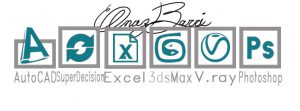Urban Underground Public Spaces
Description
Academic Individual Work

Project description
A rapid rate of urbanization and accelerated developments exacerbate air pollution, road congestion, and the quality of urban life. Tehran Azadi Square is a historical heritage and modern open space in Iran. It faces critical problems such as poor air quality, growth of criminal activities, and lack of place identity and attachment. Therefore, the goal of this research was to improve the quality of life and strengthen the place identity.
My responsibility
I worked individually on this project with my supervisor's valuable guidance. It was the first time that I used the multi-criteria decision-making method for prioritizing the principal factors of design. For this historical site, we proposed underground development seemed like a logical and practical solution to both improve the quality of life and protect the history and identity of the place. I carried out a survey of urban experts in designing urban underground spaces and created my "ANP model" with Super Decision Software to evaluate the importance of each criterion in our research. The results indicated that the permeability (accessibility) and continuity are two main factors in underground space design to promote the integration of aboveground and underground space and facilitate the pedestrian movement flow. Then, I employed the SWOT technique analysis for drawing up design guidelines and policies. Consequently, the final proposed drawings were made based on proper solutions.




